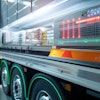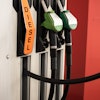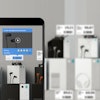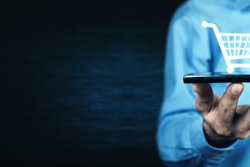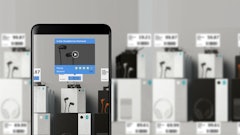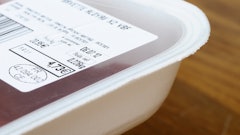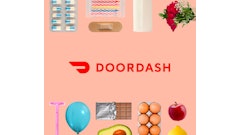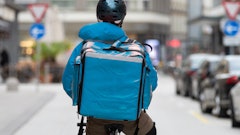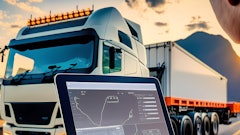
The Coronavirus disease (COVID-19) has impacted food distribution chains as both supply and demand remain volatile and continue to prove unpredictable nearly eight months into the pandemic. Regardless, new core behavioral trends appear, as Deutsche Bank has forecasted online grocery to grow at a compound annual growth rate of 28.2%, significantly higher than the 2.5% projected for overall grocery sales.
An analysis of the online grocery sector by Bain & Co. revealed that online grocery shopping growth would continue even after lockdown measures are gradually lifted in the future. COVID-19 has sparked a long-term shift of consumer preference towards online or click and collect purchasing, as customers are getting used to the convenience and experience of online grocery shopping.
The repercussions of so many consumers starting to buy groceries online at once have taken its toll on the "last touch" centers used to fulfill last-mile orders. This rapid shift to delivery has put a heavy burden on last mile distribution centers, especially within dense urban areas where most real estate is already being optimized for housing. It is in these urban areas that demand has risen most significantly. That means companies selling to those markets are struggling to find enough last-touch distribution hubs, close enough to their urban customers, to facilitate timely delivery.
The new solution -- hyperlocal on-demand distribution centers
Facing a shortfall of space, retailers and logistics companies are getting creative with their last-mile strategies. On-demand, mobile distribution hubs have begun to pop up and are seen as viable solutions with all the benefits of an agile operation. Businesses have reasoned that smaller, quick drops can pay off for retail customers and consumers and ease the burden on more prominent distribution centers by streamlining last mile fleets to pick up directly from supply trucks dropped in available parking lot spaces.
There are multiple reasons why this trend is taking place. For one, temporary trailers allow businesses to scale warehouse space in step with demand. Another reason is warehouse access can be difficult for a distributor's traditional customer base. Lastly, the pandemic has accelerated home delivery in every shape and form, pushing it to where it would have been in five years in a little over six months. In some of these high-demand areas, the network can't support the increased orders for groceries from home-bound workers who don't want to risk exposure. This translates to a lot of semi-trucks not being able to get through the bottlenecks and tight-time schedules of grocery store loading docks.
The 53-foot answer has arrived. Savvy distributors have started working outside the old system to meet today's new demands by bringing supplies closer to retailers by turning semi-trailers into on-demand distribution centers. By renting a few parking spaces, distributors can drop a trailer with multiple loads, thus creating a new model for flexible, future-proofed mini-warehouses.
Solving the hard problem
Using semi-trailers as distribution hubs sound great, and early reports have shown it can work, but only if stakeholders have the technology to solve the complexity embedded in this approach. This plan requires ingenuity and the right partners to advance the practicality and scalability of this model. Software already helps perform dynamic matchmaking that brings warehousing and inventory together for convenience and efficiency.
Matchmaking is just one part, as software can do more earlier up the supply chain to leverage productivity. Loading a delivery truck from a semi-trailer is very different from loading from a warehouse. For one, a trailer is much smaller and must be optimized for pickups before it arrives. Reverse stocking has long been used by warehouses and centers to load the last drop off first etc. With these mobile, tiny warehouses, this process is even more critical as there are no docks to shuffle things around.
To illustrate this complexity, let's say a refrigerated truck is going out with fresh produce to be parked as a mobile distribution center. Three trucks are picking up four loads from this trailer, each from a different grocery store. The first order (loaded last) goes to Truck A, from a bigger chain. The next order goes to Truck B, and the third load goes to Truck C. The final load is going to Truck A again because they have a larger store and need more product. The trailer must be loaded in reverse of how the trucks will be picking up their goods while accounting for the travel time of Truck A to unload and return. As you can imagine, the scenarios can become more complex and impossible to do manually at scale.
Without modern last-mile software to automate load planning, mobile distribution centers could become bottlenecks in their own right.
You can't change the time or energy it takes to get a trailer of produce to market, but you can accelerate the planning, improve the routes and largely automate the process, therein lies the magic of software. This is why robust logistics solutions are just reaching their full potential; there are so many practical places it can optimize within today's supply chain limitations, limitations this pandemic has exposed overnight.
The path ahead feels unfamiliar at best, and we will continue to see mavericks attempt to rebuild the wheel of commerce and last mile solutions appropriate for the times. While last touch hubs pop up around cities, others will try to win on speed alone. Some retailers are trying to win the crown for same-day or next-day delivery. There are many more companies remaining second-day or longer. Second-day provides just as much customer satisfaction — especially for businesses equipped with tech to allow customers to track their order any time, on any device. And, this is where everyone can win, through perfecting the customer experience using tracking tools that deliver transparency above all else to the Amazon-conditioned consumer. Pandemic or post-pandemic, they want home delivery and come the big day, they want to know where it’s at from their phone.


